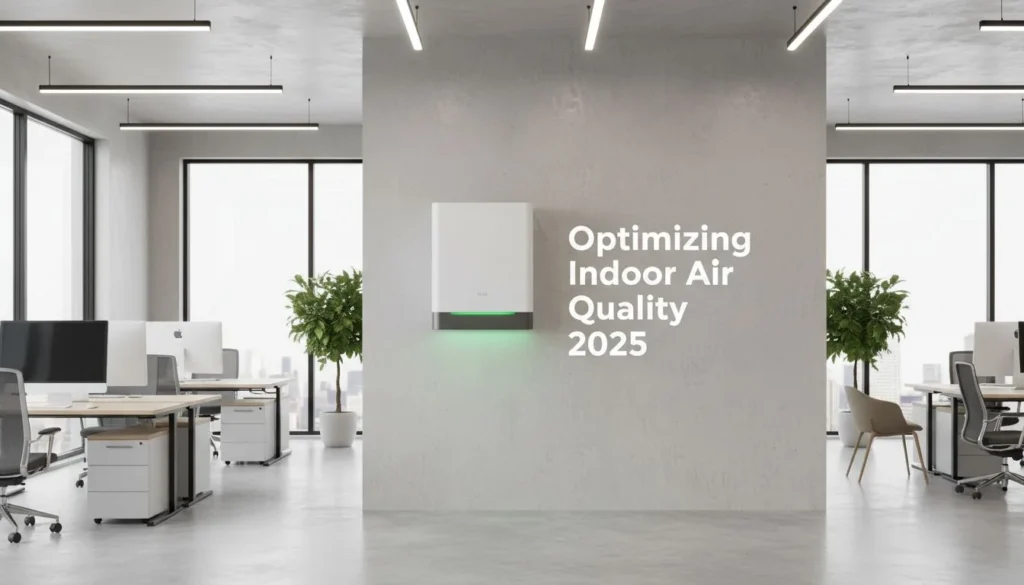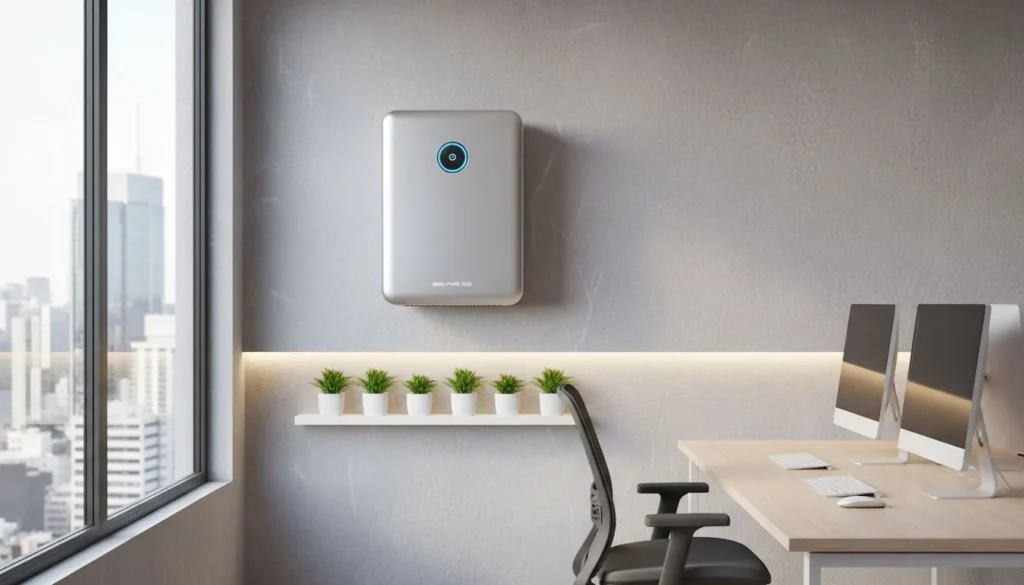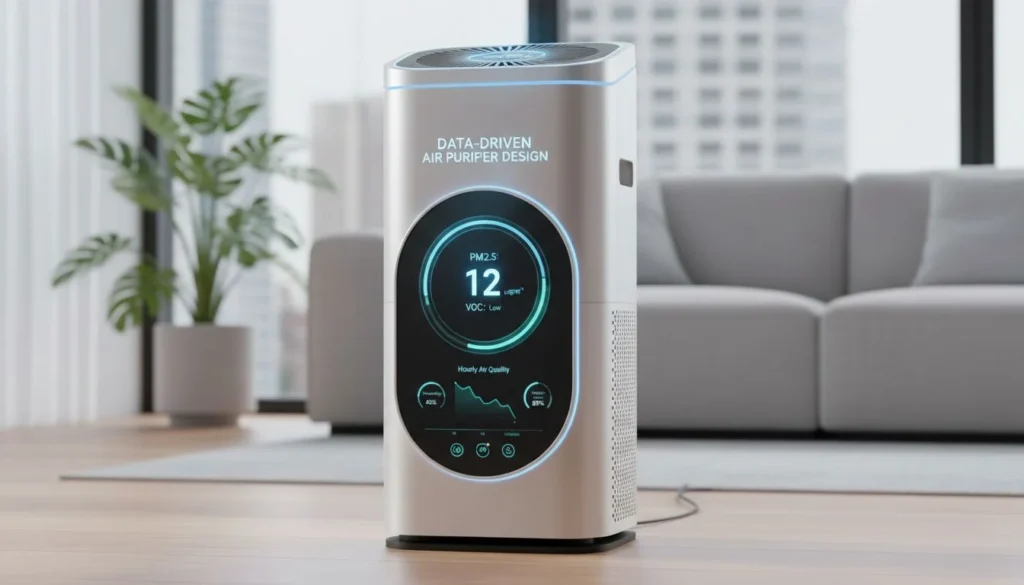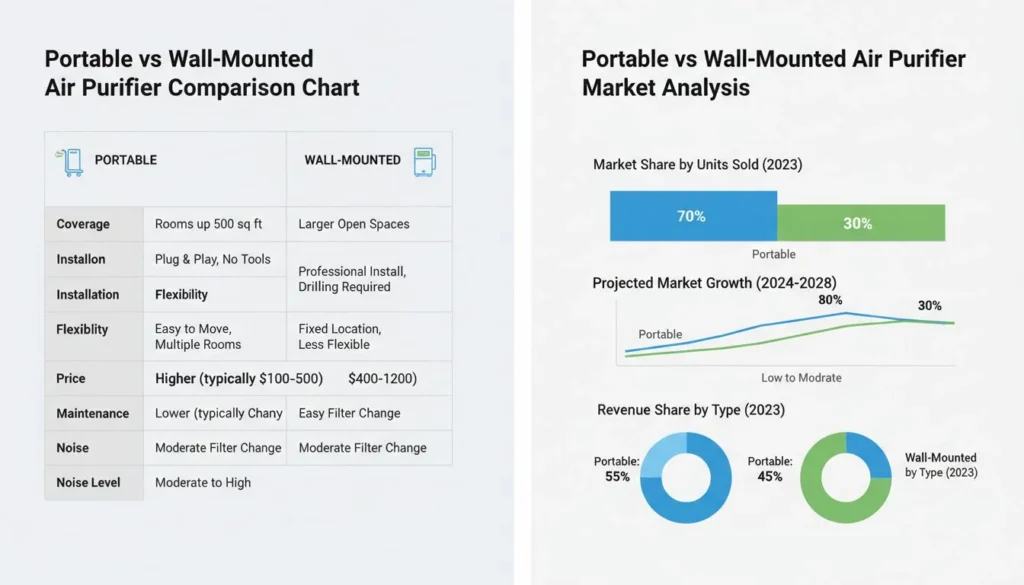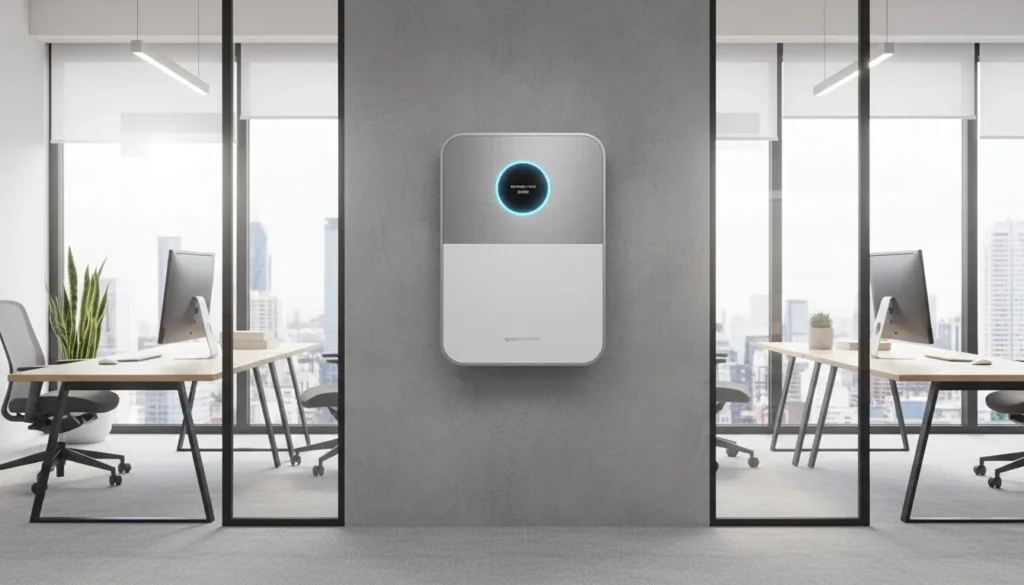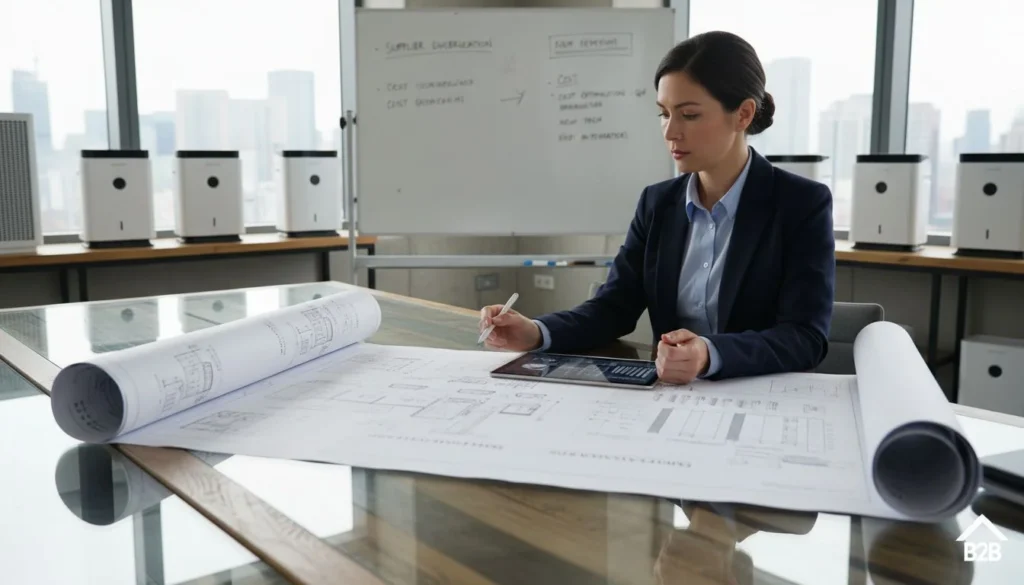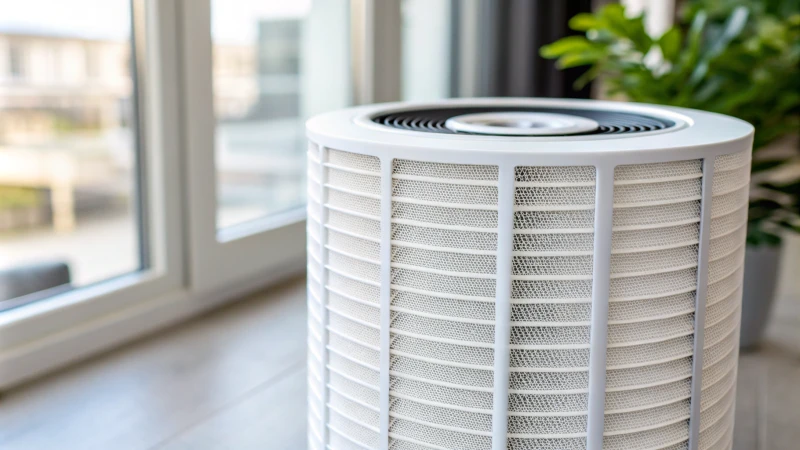
실내에서 코를 간지럽히는 먼지를 느낀 적이 있나요? 공기청정기가 실내를 신선한 공기가 가득한 공간으로 바꿔줍니다.
다음과 같은 고효율 필터 HEPA 13 및 HEPA 14는 최신 공기청정기의 중요한 요소입니다. 이 필터는 먼지와 알레르겐을 포함한 99.997% 이상의 공기 중 입자를 포착합니다. 이러한 필터는 유해 입자를 가두는 동시에 공기가 자유롭게 흐르도록 하여 공기질을 개선합니다. 이러한 필터는 더 건강한 실내 공간을 위해 필수적입니다. 네, 정말 필수적입니다.
특히 푹신한 고양이를 키운 후에는 눈이 가렵고 코가 막혀서 잠에서 깼던 기억이 납니다. 매일 아침이 똑같았죠. 강력한 필터가 장착된 공기청정기가 정말 도움이 되었어요. 그 후 제 아침은 많이 달라졌어요. 이 필터의 기술은 저를 놀라게 합니다. 필터는 입자를 잡는 것 이상의 역할을 합니다. 알레르기 유발 물질을 차단합니다. 따라서 호흡 문제가 있는 사람들에게 도움이 됩니다. 이제 이러한 장치가 어떻게 작동하는지 더 자세히 알아봅시다. 집에 필요한 신선한 공기를 가져다 줄 것입니다.
HEPA 14 필터는 99.997%의 공기 중 입자를 제거합니다.True
HEPA 14 필터는 99.997%의 입자를 포집하여 공기질을 개선하도록 설계되었습니다.
PuroAir는 아마존 최초의 공기청정기 브랜드입니다.False
PuroAir가 최초라고 주장하지만, 그 이전에도 아마존에는 많은 브랜드가 존재했습니다.
왜 HEPA 13 및 HEPA 14 필터 스페셜?
왜 HEPA 13 및 HEPA 14가지 필터가 공기청정용으로 인기가 있나요?
HEPA 13 및 HEPA 14개의 필터가 특별합니다. 공기 중 99.95% 및 99.995% 이상의 입자를 걸러냅니다. 최신 기술로 뛰어난 효율과 작은 저항을 제공합니다. 이 필터는 강력한 공기청정기에 이상적입니다.
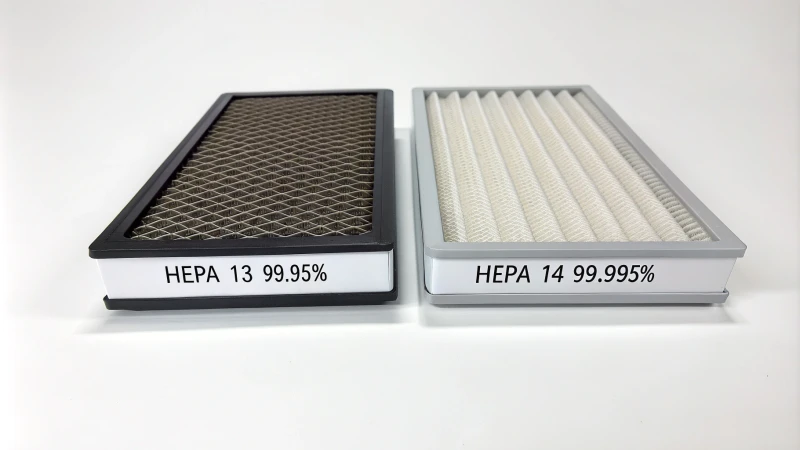
이해 HEPA 필터링 기준
어렸을 때 저는 알레르기와 자주 싸웠고, 항상 공기 중에 보이지 않는 적과 싸웠습니다. 그래서인지 공기 정화 기술에 관심이 많았습니다. 직업 그 이상이 되었죠. 개인적인 일이었죠. HEPA는 고효율 미립자 공기를 의미하는 것으로, 작은 입자를 걸러낼 때 자주 언급됩니다. 이 필터는 재채기를 많이 유발하는 먼지나 꽃가루와 같은 작은 입자를 걸러내는 데 탁월합니다.
| 필터 유형 | 효율성 비율 | 입자 제거 |
|---|---|---|
| HEPA 13 | 99.95% | 0.1마이크론의 작은 입자까지 포착합니다. |
| HEPA 14 | 99.995% | 0.1마이크론의 작은 입자까지 포착합니다. |
HEPA 13 및 HEPA 14는 필터링 성능에 차이가 있습니다. 두 제품 모두 0.1마이크론 정도의 작은 입자를 잘 걸러내지만 HEPA 14가 약간 더 나은 효율성을 관리합니다. 이 약간의 차이로 인해 HEPA 14 탁월한 선택입니다.
병원과 실험실은 깨끗한 공기가 중요한 곳이기 때문에 이러한 필터를 사용하는데, 이는 단순히 있으면 좋은 것이 아니라 필수적입니다.
기술 발전
처음 필터 미디어 기술을 개선하기 위해 일했을 때는 새로운 가능성의 세계로 들어가는 느낌이었어요. 새로운 변화로 인해 HEPA 13 및 HEPA 14개의 필터가 작동합니다. 공기 흐름을 좋게 유지하면서 더 많은 입자를 잡는다고 상상해 보세요. 이전 모델은 이 문제로 어려움을 겪었습니다.
다음과 같은 일부 브랜드는 퓨로에어1청정 공기 전달률이 10% 미만으로 떨어졌습니다(CADR)를 사용하여 HEPA 14 기술로 탁월한 필터링 기능을 유지합니다.
애플리케이션 및 시장 동향
팬데믹 이후 공기 질은 큰 화두가 되었습니다. 저를 포함한 많은 사람들이 특히 실내에서 깨끗한 공기의 필요성을 느꼈습니다. 이제 많은 사람들이 다음과 같은 고효율 필터를 구입합니다. HEPA 13 및 HEPA 실내 공간의 경우 14.
'교체 불가' 필터는 필터 교체 빈도를 줄여 장기적으로 비용을 절감할 수 있는 새롭고 흥미로운 아이디어로, 예산 관리에 민감한 사용자들에게 큰 도움이 됩니다! SharK와 같은 회사가 이 기술을 선도하고 있습니다. HisoAir 도 앞으로 나아갑니다.
기술이 발전함에 따라 다음 중 하나를 선택할 수 있습니다. HEPA 13 및 HEPA 14는 필요와 예산 고려 사항에 따라 달라집니다. 그러나 점점 더 많은 옵션과 기술 발전으로 소비자들은 그 어느 때보다 더 깨끗한 환경을 조성할 수 있는 선택의 폭이 넓어졌습니다.
HEPA 14 필터는 99.997% 이상의 입자를 포집합니다.True
HEPA 14 필터는 최소 99.997%의 공기 중 입자를 포집하도록 설계되었습니다.
PuroAir는 아마존 최초의 공기청정기 브랜드입니다.False
PuroAir는 선도적인 브랜드라고 주장하지만 아마존의 첫 번째 브랜드는 아닙니다.
고효율 필터는 어떻게 공기질을 개선하나요?
고효율 필터가 우리가 숨 쉬는 공기를 어떻게 변화시키는지 생각해 본 적이 있나요? 제가 공기 청정 챔피언의 세계를 탐험한 이야기를 들려드리고자 합니다.
HEPA 필터는 먼지, 꽃가루, 박테리아와 같은 공기 중 입자를 99.97%까지 포집합니다. 촘촘한 층이 이러한 입자를 가두어 공기를 정화하고 진정으로 신선도를 개선합니다. 실제로 오염 물질을 줄여줍니다.

알아보기 HEPA 기술
제가 처음 HEPA 필터는 집안의 보이지 않는 먼지를 막아주는 숨겨진 도구처럼 느껴졌습니다. 고효율 미립자 공기 필터라고 불리는 이 필터(HEPA) 필터는 0.3마이크론 크기의 공기 중 작은 입자를 99.97% 이상 걸러냅니다. 모든 꽃가루가 그물에 걸리고 깨끗한 공기만 통과하는 정원을 걷는다고 상상해 보세요. 이 필터는 두꺼운 소재를 통해 바로 이러한 효과를 달성합니다.
HEPA 기술은 공기를 정화할 뿐만 아니라 특히 호흡에 문제가 있는 사람들에게 편안함을 선사합니다. 이러한 필터가 끊임없이 공기를 정화한다는 사실을 알면 숨을 쉴 때마다 더 안전하다고 느낄 수 있습니다.
기능 HEPA 필터
저는 정말 놀랐습니다. HEPA 필터는 차단, 임팩트, 확산이라는 세 가지 특수 기술을 가진 작은 영웅처럼 작동합니다. 필터의 작동 방식은 다음과 같습니다:
- 차단: 필터를 통해 공기가 이동하고 섬유가 입자를 걸러냅니다.
- 임팩트: 더 큰 입자는 섬유에 닿아 거기에 달라붙습니다.
- 확산: 작은 입자는 무작위로 움직이며 갇히게 됩니다.
이러한 작용이 합쳐져 많은 오염 물질에 대한 강력한 보호 기능을 제공합니다. 이러한 보호 기능은 우리가 호흡하는 공기를 매우 깨끗하게 유지합니다.
필터 유형 비교
| 필터 유형 | 효율성 비율 | 입자 크기(미크론) | 사용 사례 |
|---|---|---|---|
| HEPA | 99.97% | 0.3 | 가정, 병원 |
| 탄소 | 변수 | 가스, 냄새 | 주방, 사무실 |
| UV | 다양 | 미생물 | 병원, 실험실 |
HEPA 필터는 공기 중 대부분의 오염 입자를 제거하는 데 정말 놀라운 성능을 발휘합니다. 이 표는 그 이유를 강조합니다. HEPA 기술은 다른 필터 유형에 비해 매우 특별합니다.
필터 머티리얼 진행 상황
더 깨끗한 공기를 찾던 중 몇 가지 흥미로운 개선 사항을 발견했습니다. 다음과 같은 브랜드 퓨로에어2 개선되었습니다. HEPA 필터는 매우 효과적이면서도 더 많은 공기 이동을 허용합니다. 이러한 개선으로 공기청정기는 더 조용하고 효율적으로 작동하면서도 성능을 유지할 수 있게 되었으며, 이는 평화와 건강을 모두 중요시하는 사람들에게는 꿈과도 같은 일입니다.
실생활에서의 사용
고효율 필터는 가정에서 유용할 뿐만 아니라 병원에서는 환경을 청결하게 유지하는 데 필수적이며 사무실에서도 매우 유용합니다. 공기질이 개선되면 업무 생산성이 높아지고 병가일수가 줄어들어 모두에게 이득이 됩니다.
공기 청정 분야의 미래 전망
먼지를 더 많이 걸러내는 대용량 필터와 같은 새로운 아이디어로 미래가 유망해 보입니다. 다음과 같은 회사 SharK3 는 교체할 필요가 없는 필터를 판매하여 구매자에게 매우 저렴한 유지비를 제공합니다. 이는 지속 가능하고 지갑에 부담이 없는 선택에 대한 요구가 증가하는 추세에 완벽하게 부합합니다.
요약하자면, 고효율 필터는 실내 공간을 더 건강하게 만드는 데 핵심적인 역할을 합니다. 기술이 발전함에 따라 이러한 필터는 더욱 강력하고 유용해질 것입니다. 이러한 시스템과 개선 사항을 이해하면 실내 공기질 개선에 대해 현명하게 결정할 수 있습니다.
HEPA 14 필터는 99.997%의 입자를 제거합니다.True
HEPA 14 필터는 99.997% 이상의 공기 중 입자를 포집하여 공기질을 개선합니다.
PuroAir는 아마존 최초의 공기청정기 브랜드입니다.False
PuroAir는 선도적인 브랜드라고 주장하지만 아마존의 첫 번째 브랜드는 아닙니다.
고급 필터가 비용 이점을 제공하나요?
고급 필터로 비용을 절약할 수 있는 방법에 대해 생각해 본 적이 있나요? 이러한 최신 도구는 예산에 큰 도움이 될 수 있습니다. 고급 필터는 정말 지갑의 가장 좋은 친구가 될 수 있습니다.
HEPA 14개의 필터로 공기를 더 깨끗하게 정화하여 비용을 크게 절감합니다. 건물 수리 횟수가 줄어듭니다. 이는 곧 건강 및 운영 비용 지출이 줄어든다는 것을 의미합니다. 시간이 지날수록 절감 효과는 더욱 커집니다.
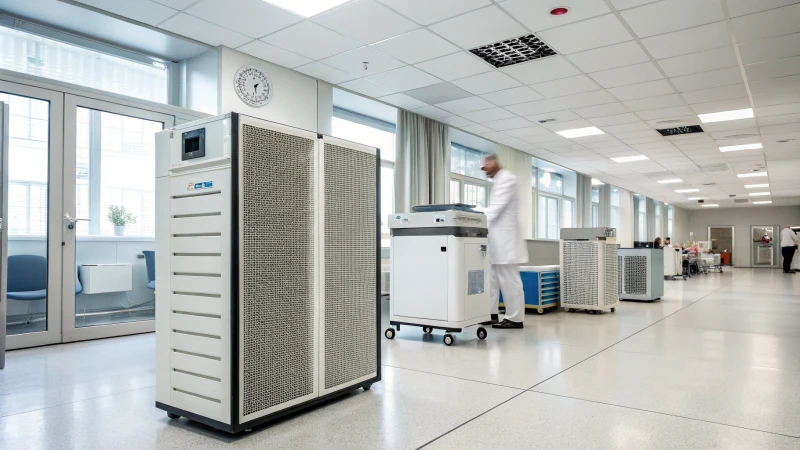
경제적 이점 HEPA 필터
저는 제가 HEPA 필터를 사무실 공기청정기에 설치했습니다. 마치 신선한 공기의 신세계에 들어온 것 같았어요. HEPA 필터, 특히 HEPA 14는 공기 중의 거의 모든 입자를 캡처합니다. 이 변경으로 인해 저희 팀은 병가 일수4를 도입하여 의료 비용을 절감했습니다. 공기가 깨끗해지니 알레르기 유발 물질에 대한 걱정이 줄어들고 업무에 더 집중할 수 있었습니다. 걱정 감소. 더 많은 업무.
유지보수 비용 절감
처음에는 고급 필터의 높은 가격이 걱정되었지만, 오래 지속되는 품질과 우수한 성능으로 곧 그 비용을 감당할 수 있었습니다. SharK와 같은 브랜드와 HisoAir5 "절대 교체하지 않는" 필터를 판매하여 교체 빈도를 줄였습니다. 필터를 자주 교체할 필요가 없다는 것을 알았기 때문에 초기 비용을 지불할 가치가 있었습니다. 정말 그만한 가치가 있었습니다.
| 필터 유형 | 초기 비용 | 교체 빈도 | 장기 저축 |
|---|---|---|---|
| 표준 | 낮음 | 높음 | 보통 |
| HEPA 13 | 보통 | 보통 | 높음 |
| HEPA 14 | 높음 | 낮음 | 매우 높음 |
에너지 효율성 고려 사항
시작 가격이 높긴 하지만요, HEPA 14개의 필터가 공기 저항을 낮추도록 설계되었습니다. 이 기능은 HVAC 시스템의 부담을 줄이고 에너지를 덜 사용합니다. 에너지 비용도 절감됩니다. 돈과 지구를 모두 아끼고 싶다면 이러한 에너지 효율성이 큰 도움이 됩니다. 다음 사항 이해 에너지 측면6 는 비용을 절감하고 탄소 영향을 줄이는 데 중요합니다.
기술 발전의 역할
필터 소재의 발전으로 저항이 낮은 고효율 필터가 구형보다 더 나은 경우가 많습니다. 그리고 깨끗한 공기 전달률 (CADR)7 이러한 개선에도 불구하고 강력한 성능을 유지하여 공기를 매우 깨끗하게 유지합니다. 이러한 기술 업그레이드를 도입하면서 필터에 대한 투자가 현명했음을 증명했습니다. 이제 필터는 제 사업 계획에서 매우 중요한 부분을 차지하고 있습니다.
HEPA 14 필터는 99.997% 이상의 입자를 제거합니다.True
HEPA 14 필터는 99.997%의 공기 중 입자를 포집하도록 설계되었습니다.
HEPA 13 필터를 사용하면 HEPA 14보다 비용을 더 많이 절감할 수 있습니다.False
HEPA 14 필터는 더 나은 효율성과 장기적인 비용 이점을 제공합니다.
Are HEPA 알레르기 고민에 대한 해답은 필터링?
가끔 방에 들어가면 공기가 맑고 상쾌하게 느껴져 안도감을 느낄 때가 있습니다. 이러한 느낌은 종종 HEPA 필터는 알레르기가 있는 분들에게 특히 중요합니다. 알레르기는 불편함을 유발할 수 있습니다. A HEPA 필터는 공기 중 알레르기 유발 물질을 제거하는 데 도움이 됩니다. 이 작은 장치가 공기질에 큰 차이를 만들어냅니다. 깨끗한 공기는 매우 중요합니다. 공기가 정화되면 알레르기는 견딜 수 있게 됩니다.
HEPA 필터는 꽃가루, 집먼지 진드기, 애완동물의 털과 같은 알레르기 유발 물질을 잡아내는 데 탁월한 성능을 발휘합니다. 0.3마이크론 크기의 작은 입자까지 걸러냅니다. 알레르기 환자에게 큰 도움이 됩니다. 정말 눈에 띄는 완화를 제공합니다.
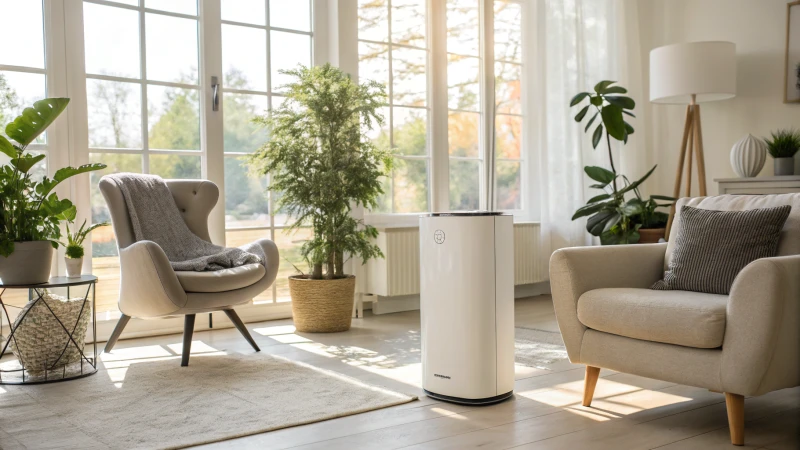
방법 HEPA 필터가 작동하나요?
집 안의 작은 먼지까지 모두 잡아내는 거대한 그물을 상상해 보세요. 이것이 바로 HEPA (고효율 미립자 공기) 필터를 사용합니다. 이 필터는 촘촘한 섬유를 사용해 0.3마이크론의 작은 입자를 가둡니다. 집에 처음 설치했을 때 재채기를 유발하는 집먼지 진드기와 애완동물의 비듬을 마침내 물리친 기분이었습니다. 이해 HEPA 기술8 이 강력한 필터가 어떻게 공기를 깨끗하게 유지하는지 잘 보여줍니다.
사용의 이점 HEPA 필터
HEPA 필터는 신선한 공기를 마시는 것과 같습니다. 필터를 교체한 후 공기의 질이 좋아지고 재채기 횟수가 줄어들어 안심할 수 있게 되었습니다. 이러한 필터는 다음과 같은 기능을 하기 때문에 필수적입니다:
- 공기 질 개선: HEPA 필터는 공기 중의 알레르기 유발 물질을 제거합니다.
- 증상 감소: 저를 포함한 많은 사람들이 알레르기 증상을 덜 느낍니다.
- 마음의 평화: 깨끗한 공기는 알레르기가 있는 분들에게 중요한 편안함을 가져다줍니다.
다음과 같은 방법을 고려하세요. HEPA 필터로 생활 환경 개선9. 그들은 진정으로 그들을 향상시킵니다.
| 기능 | HEPA 필터 |
|---|---|
| 입자 제거 | 0.3미크론에서 99.97% |
| 알레르기에 적합 | 예 |
| 비용 효율성 | 중간에서 높음 |
올바른 선택 HEPA 필터
올바른 선택 HEPA 필터는 새 가족 구성원처럼 딱 맞아야 합니다. 크기, 비용, 알레르기를 고려하세요. 다음과 같은 모델 HEPA 14는 더 나은 결과를 제공하고 좋은 공기 흐름을 유지합니다. 궁금한 점이 있으신가요? HEPA 사용 가능한 모델10? 선택 사항을 살펴보고 필요와 예산에 가장 적합한 것을 찾는 데 도움이 될 것입니다.
결합 HEPA 다른 솔루션으로 필터링
My HEPA 필터는 정기적인 청소 및 습도 조절과 같은 다른 솔루션과 함께 사용할 때 가장 효과적입니다. 필터의 장점을 극대화하는 조합을 만드는 것이 중요합니다. 방법 살펴보기 상호 보완적인 전략으로 효과성 향상11 는 다양한 접근 방식이 실내 알레르기 유발 물질을 잘 처리한다는 것을 보여줍니다.
HEPA 14 필터는 99.997%의 입자를 제거합니다.True
HEPA 14 필터는 99.997%의 공기 중 입자를 포집하도록 설계되었습니다.
PuroAir는 아마존 최초의 공기청정기 브랜드입니다.False
퓨로에어는 성공을 주장하지만, 최초의 공기청정기 브랜드는 아닙니다.
결론
고효율 HEPA 필터와 같은 HEPA 13과 14는 공기청정기의 핵심 요소로, 99.997% 이상의 공기 중 입자를 포집하여 실내 공기질을 개선하고 알레르기 유발 물질을 감소시킵니다.
-
퓨로에어에서 HEPA 14 기술을 사용하는 방법과 다른 브랜드와 비교하는 방법에 대해 자세히 알아보세요. ↩
-
최첨단 기술로 공기청정기 성능을 향상시키는 PuroAir의 혁신적인 저저항 HEPA 필터를 살펴보세요. ↩
-
지속 가능한 공기 정화 솔루션을 위한 SharK의 비용 절감형 네버체인지 필터에 대해 알아보세요. ↩
-
공기질이 생산성에 미치는 영향을 이해하면 기업이 더 나은 여과 시스템에 대한 투자를 정당화하는 데 도움이 될 수 있습니다. ↩
-
이 기술을 살펴보면 유지 관리 비용을 절감할 수 있는 혁신적인 방법에 대한 인사이트를 얻을 수 있습니다. ↩
-
에너지 효율에 대해 알아두면 다양한 필터 유형의 비용 효율성을 평가하는 데 도움이 될 수 있습니다. ↩
-
CADR을 이해하면 고급 필터가 장착된 공기청정기의 성능 효율성을 평가하는 데 도움이 됩니다. ↩
-
HEPA 필터의 메커니즘과 공기질 개선에 있어 필터의 역할에 대한 인사이트를 얻으세요. ↩
-
HEPA 필터가 알레르기 증상을 완화하고 실내 공기질을 개선하는 방법을 알아보세요. ↩
-
다양한 HEPA 필터 모델에 대해 알아보고 필요에 가장 적합한 필터를 선택하세요. ↩
-
알레르기 유발 물질을 줄이기 위한 여러 전략을 통합하여 공기 정화를 극대화하는 방법을 찾아보세요. ↩


